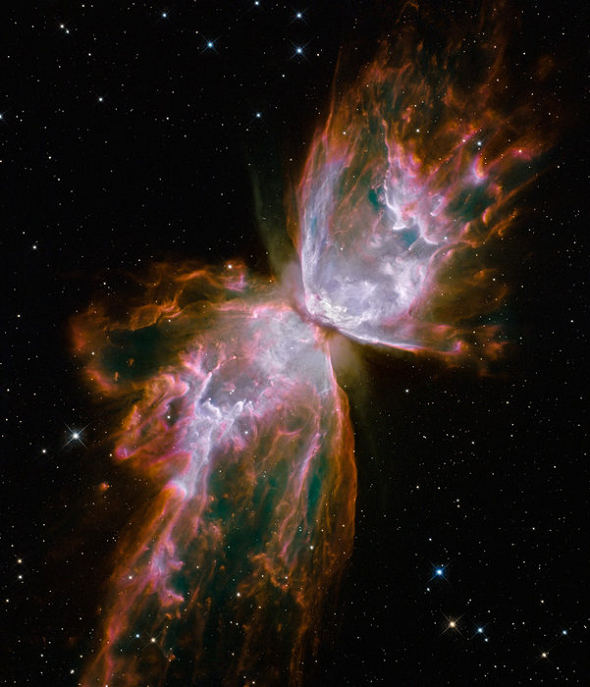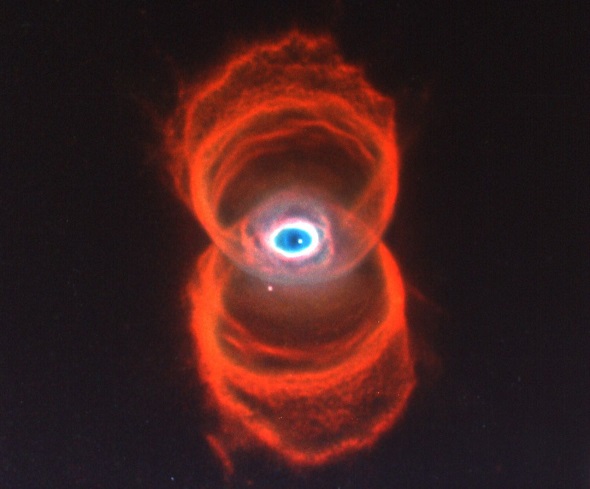The Hubble telescope has captured the image of the last breath of the planetary nebula NGC 6302 or ‘Butterfly Nebula‘, because in agony it adopts a similar form of this insect.

This phenomenon is located about 3,800 light-years from Earth, and was formed when a star about five times the mass of the Sun became a red giant and ejected its outer layers with intense heat, reports the European Space Agency (ESA) .
Its distinctive shape is classified as a bipolar nebula, where the fast-moving gas can escape more easily from the poles of the dying star than from around its ecuador. This creates a lobed structure that resembles an hourglass or, as in this case, a giant cosmic butterfly.
Besides making more beautiful the photo, experts suggest that the mixture of colors reveals much about the physical conditions within the nebula. Thus, red edges of the wings represent areas that emit light from one element of nitrogen, due to the relatively low temperatures.
On the contrary the white dotted near the center of the nebula light is emitted by the sulfur element, showing higher temperature regions and gases colliding closer to the central star.

This hot gas was expelled from the star and hit the slower moving gas in its path, creating shock waves rippling through the nebula. An example of this occurrence is the well-defined white spot at the upper right of the image. The other colors show the emission of oxygen, helium and hydrogen.



